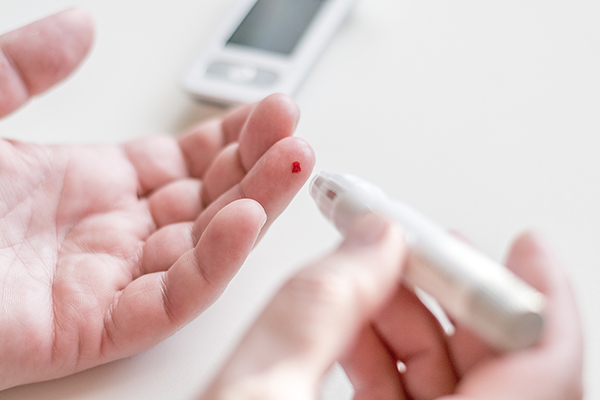New AI-powered patient portal boosts patient access, safety, and satisfaction.

Remote Glucose Monitoring improves access to diabetes care and doesn't require a visit to review blood sugar levels.
Revolutionizing Diabetes Monitoring
Technology Allows Patients in Southern California to Remotely Submit Glucose Levels
By Eric Bottomley
The Permanente Federation
For some underserved Americans living with diabetes, visiting the doctor to review blood sugar levels can be a challenging task. It can often mean the difference between paying rent and putting food on the table due to unpaid time away from work.
Permanente physicians are working to eliminate this pressing social and medical issue with newly introduced technology that no longer requires doctors’ visits to manage glucose levels.
Remote Glucose Monitoring gives every patient an opportunity to remotely submit their blood sugar levels and eliminates the need to come in for an office visit. This innovation is the latest answer in fighting diabetes before it becomes worse and will also improve the way patients receive equal access to prompt and effective care regardless of their socioeconomic status.
Launched by the Southern California Permanente Medical Group in February 2017, Remote Glucose Monitoring has already begun to revolutionize the way diabetes is being monitored and treated.
Submitting Results by Phone
Kaiser Permanente provides Bluetooth®-enabled glucose meters that make it easy for patients from any location to stick their finger and have the readings automatically synced to their mobile phone. On the backend, Kaiser Permanente has developed a way for the glucose readings to be remotely pushed to patients’ electronic medical records from their phones. The patient’s physician is notified when the patient’s glucose level is high so that the care team can take corrective action.
“When our physicians see that a patient has been flagged with dangerously high levels of glucose, they can quickly intensify treatment by upping dosages, starting new medications, or using other interventions,” says Jim Dudl, MD, physician lead of the Remote Glucose Monitoring program. “This leads to better care because they are handling the problem while it’s happening rather than waiting until the patient’s next visit.”
Kaiser Permanente is also working to create advanced algorithms that will use data to predict which patients are likely to be flagged with unsafe glucose levels so preventive intervention can take place sooner.
Remote Glucose Monitoring has proved even more beneficial for underserved populations who find it difficult to receive care because of the lack of reliable transportation, concern over unpaid time away from work, and family obligations.
Access for Underserved Populations
In a small internal sample of A1C improvement in different populations, medically underserved Hispanic patients were found to do as well or better than non-Hispanic white patients; partly due to more access to care and less time away from work or family obligations that would make it difficult to review blood sugar levels with a doctor.
“With Remote Glucose Monitoring, patients don’t have to miss work, they don’t have to find child care, and they don’t have to find transportation to see a doctor,” says Dr. Dudl. “The second issue this helps us cover is communication.”
All patients risk misunderstanding or forgetting health care advice when care is provided over the phone or in-person. Remote Glucose Monitoring uses email communication to reduce the likelihood of error. The technology will also start becoming available in Spanish in January 2018 and will soon be offered with text messaging capabilities.
This leads to better care because they are handling the problem while it’s happening rather than waiting until the patient’s next visit.
– Jim Dudl, MD, physician lead, Remote Glucose Monitoring program
Moving forward, Kaiser Permanente will focus on spreading its Remote Glucose Monitoring program beyond California. To do so, it will recruit the help of its Care Management Institute – a specialized institution within Kaiser Permanente that is tasked with finding and spreading new and improved ways of doing things across the organization.
The Care Management Institute has begun working closely with diabetes experts in each Kaiser Permanente region to bring this technology in the coming years to the more than 700,000 people living with diabetes across the organization.
Remote Glucose Monitoring will mark an end to when millions of people had to choose between the demands of effectively managing their diabetes and the demands of everyday life. It is one more example of how Kaiser Permanente provides high quality, equitable, and efficient care through Permanente Medicine.


